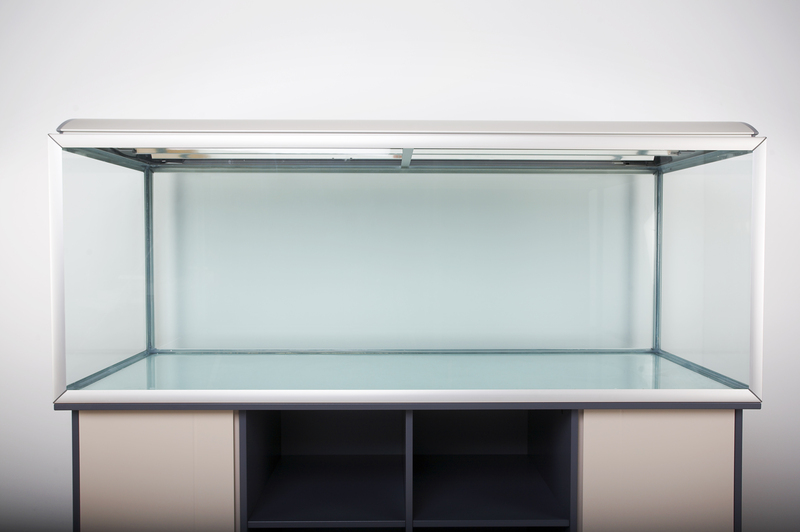The Ultimate Solo Lifting Guide for Heavy Objects
Lifting heavy objects alone can be a daunting task, whether you're relocating furniture, transporting equipment, or tackling a home improvement project. Safety and efficiency are key, as improper technique can lead to injuries and costly damages. Solo heavy lifting is a skill that, when mastered, empowers you to handle more without needing to wait for assistance. In this comprehensive, SEO-optimized guide, we'll walk you through everything you need to know to lift heavy items safely and efficiently all by yourself.
Understanding the Basics of Heavy Object Lifting
The fundamentals of solo lifting revolve around safe handling, proper preparation, and using the right equipment. Before you pick up that object, it's crucial to understand your body's limitations and the mechanics involved in lifting.
Why is Proper Lifting Technique Important?
- Prevents injuries: Back strains and muscle pulls are common with poor technique.
- Improves efficiency: The right approach lets you lift heavier objects with less effort.
- Protects the object: Items are less likely to be dropped or damaged.
- Reduces fatigue: Proper lifting minimizes energy expenditure.

Preparing for Solo Heavy Lifting
Preparation is half the battle when it comes to lifting heavy objects by yourself. Taking time to plan and gather the appropriate tools can make a world of difference.
Assess the Weight and Size of the Item
Before you start, estimate the item's weight. If it's too heavy to lift safely by yourself, seek help or use mechanical aids. As a rule of thumb, most people should not attempt to lift over 50 pounds unassisted.
Clear Your Path and Destination
- Remove obstacles and tripping hazards from your route.
- Ensure doorways, stairs, and tight spaces are navigable.
- Plan where you'll set the item down before lifting.
Gather Essential Equipment
Having the right solo lifting tools can make demanding jobs easier and safer. Common equipment includes:
- Dollies and hand trucks: Great for moving large boxes, appliances, and furniture.
- Lifting straps: Distribute weight and leverage your body's strongest muscles.
- Furniture sliders: Perfect for moving heavy furniture across floors without lifting.
- Gloves and supportive footwear: Protect your hands and feet.
- Back support belts: Reduce the risk of lower back injury.
The Correct Lifting Techniques for Solo Jobs
1. Plan Your Lift
Stand close to the item with your feet shoulder-width apart for balance. Check your grip and ensure your hands are secure before lifting.
2. Bend at Your Knees, Not Your Waist
This classic lifting tip redistributes the weight from your back to your stronger leg muscles:
- Squat down by bending your knees and hips, keeping your back as straight as possible.
- Avoid twisting or shifting your weight awkwardly.
3. Keep the Load Close
Hold the object as close to your torso as possible to shorten the lever arm and minimize stress on your back.
4. Lift Smoothly
- Extend your legs and hips to stand up, lifting the load with your legs.
- Keep your core engaged for stability.
- Avoid sudden movements - slow and steady wins the race.
5. Turn with Your Feet
If you need to change direction, pivot your whole body with your feet instead of twisting your back. This minimizes spinal stress.
6. Set Down Carefully
- Reverse your motion: squat with your knees and hips to lower the item.
- Keep your back in a neutral, straight position.
- Let go once the object is stable and securely positioned.
Using Devices and Aids for Solo Heavy Lifting
Mechanical aids can significantly expand your solo lifting capacity. Here's how the right device can help:
- Dollies & Hand Trucks: Slip the load onto the platform, balance the weight, and roll it instead of carrying it.
- Lifting Straps: These loop around your forearms or shoulders, allowing you to stand straighter and use leg power.
- Lever Bars (Pry Bars): Place beneath an object to pry it up slightly and slide a dolly or furniture slider underneath.
- Forearm Forklift: A specialty strap system allowing a single person to move big items with minimal strain.
Pro Tip: Use a combination of aids when possible. For example, use a lever bar to lift one side of a heavy dresser and slide a dolly underneath.
Common Mistakes to Avoid When Solo Lifting
Even seasoned professionals sometimes make errors when moving heavy items alone. Here are pitfalls to watch out for:
- Twisting your body mid-lift: Always turn with your feet.
- Lifting with your back: Focus on leg muscles to prevent injury.
- Underestimating the object's weight: If unsure, break the load into smaller parts or use more equipment.
- Rushing: Haste increases the chance of mistakes and injury.
- Ignoring fatigue signs: Take breaks; don't muscle through pain.
Advanced Tips for Solo Heavy Lifting Success
Break Down the Load
If possible, remove drawers from dressers, detach table legs, or disassemble furniture to make smaller individual pieces that are easier to manage.
Leverage Gravity and Physics
- Slide, don't lift: Use sliders for items hard to pick up.
- Roll round items: Use pipes or rods under cylindrical objects like barrels.
- Pivot and tilt: Lean objects against a wall briefly to readjust your grip or maneuver corners.
Mind Your Environment
Consider factors like stairways, door clearances, low ceilings, and tight turns. Sometimes, creative thinking -- such as temporarily removing doors or railings -- can make the difference when lifting heavy objects by yourself.
Stay Hydrated and Warmed Up
- Do a short warm-up to get your muscles ready before moving objects.
- Stay hydrated to prevent cramps or fatigue.
Safety Considerations: Protect Yourself and Your Home
Wear Appropriate Clothing
- Choose clothes that are not too loose (to avoid snagging) and sturdy, closed-toe shoes with good traction.
- Use gloves for better grip and to prevent blisters.
Protect Your Surroundings
Use cardboard, moving blankets, or towels to cover doorframes and floors. This tip helps avoid scratches, dents, and property damage during the lifting process.
Listen to Your Body
- If you feel pain or discomfort, stop immediately.
- If the load is too heavy despite using all the right techniques and tools, do not proceed. Your health is always the top priority.
The Best Tools for Solo Lifting Jobs
Investing in the right solo lifting equipment pays dividends in safety and peace of mind. Here are some top-rated essentials to consider:
- Standard hand truck: Versatile for boxes, appliances, and furniture.
- Stair climbing dolly: Includes rotating wheels for safe stair navigation.
- Lifting straps: "Forearm forklift" or shoulder harnesses to distribute weight.
- Furniture sliders: Durable and reusable for moving on carpet or hardwood.
- Mechanical hoist: For garages or workshops with extremely heavy items.
- Back support belts: Affordable addition for heavy repeated lifts.
When NOT to Lift Heavy Objects Alone
Despite your preparation and confidence, there are times when lifting by yourself is too risky:
- Objects over your body weight: These are often unsafe to handle solo.
- Items with awkward shapes: Large sofas, refrigerators or items without easy gripping points.
- Stairs or narrow landings: Balancing heavy loads on stairs is extremely dangerous when alone.
- Fragile or irreplaceable goods: When the financial or emotional cost of damage is too high.
- If you already have an injury: Never risk re-aggravating an injury for the sake of convenience.
In these scenarios, it's always better to hire professionals or ask for help. Smart lifting means knowing when to call for backup.
Conclusion: Mastering the Art of Solo Heavy Object Lifting
Lifting heavy objects alone requires a blend of preparation, technique, and equipment. By following the principles laid out in this ultimate guide for solo lifting, you can safely and efficiently tackle moving or home improvement tasks without a helper. Remember, your safety comes first: use the proper tools, maintain good form, and don't be afraid to break up the work into manageable pieces or seek assistance when needed.
Now you're equipped with all the knowledge to become your own best helper. With careful strategy, the right equipment, and practical methods, you can take on almost any heavy lifting task solo with confidence and security!

Frequently Asked Questions About Solo Heavy Item Lifting
Is it ever safe to lift more than 50 pounds by yourself?
With ideal conditions -- proper form, professional experience, and mechanical aids -- some individuals can safely manage heavier weights. However, the safest route is to stay below 50 pounds for solo lifts to minimize injury risk.
What's the best posture for lifting heavy objects solo?
Keep your feet shoulder-width apart, squat with your knees and hips, maintain a straight back, use your legs to lift, and keep the item close to your body throughout the motion.
Are lifting straps safe for one-person jobs?
Absolutely! Lifting straps are designed for solo use and can greatly reduce strain on your arms and back. Always follow the manufacturer's instructions and check the straps for wear before each use.
Can I improve my solo lifting ability?
Yes. Strengthening your core, back, and leg muscles, as well as practicing proper lifting technique, will enhance your confidence and ability to lift heavier or bulkier objects on your own.
What should I do if I injure myself while solo lifting?
Stop immediately, apply first aid as appropriate, and assess the severity. If in doubt, consult a healthcare professional. Avoid further lifting activities until you're fully recovered.
Ready to Take on Your Next Solo Heavy Lifting Challenge?
Armed with this comprehensive solo lifting guide, you now have the techniques, safety insights, and equipment recommendations to make heavy lifting an achievable -- and safe -- task. Remember, the ultimate key to mastering heavy lifting by yourself is preparation, caution, and respect for your physical limits.
Share this guide with friends and family who may need to tackle solo moves or heavy projects. Stay safe, move smart, and happy lifting!



